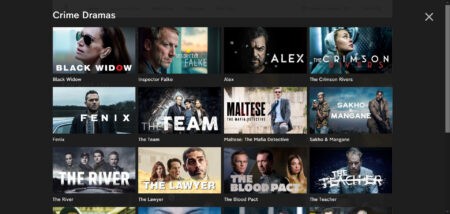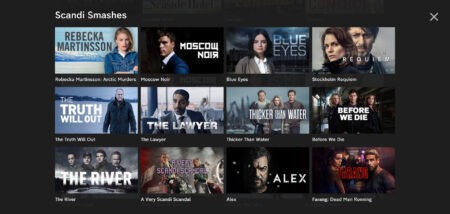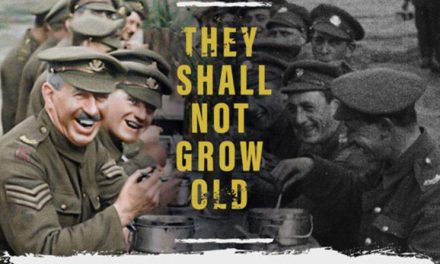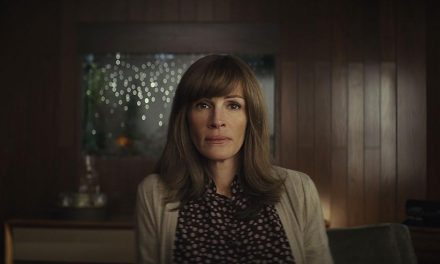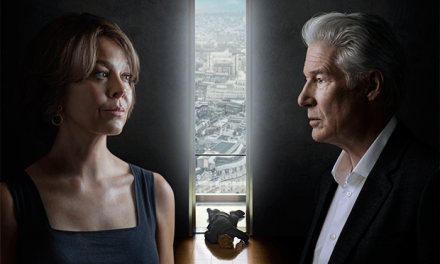I have been indulging in crime lately; crime on TV to be precise. I have noticed a few academic friends have been doing the same too. It must be a go-to topic during times of uncertainty and change. This shouldn’t be surprising as there is plenty of evidence to show how crime fiction is most resonant with audiences, and appealing as a subject for producers, when culture and society are experiencing change, and seemingly in need of formulas, solutions, and certainties. This said, my indulgence has not knowingly been a search for reassurance in troubled times, it has merely been an indulgence – of a professional and academic kind. Further, my indulgence has not solely concentrated on TV crime fiction. My recent teaching of factual TV has led me to a host of factual TV crime formats, and their potential for explaining new trends and ideological positions in the television landscape.
This pilot episode (see title – I’m aiming for an Anthology Series), therefore, is a description of my encounters with crime both in academia and on television over the last 18 months and will eventually lead to a more thorough examination of my findings. There have been all kinds of seemingly serendipitous moments where my curiosity in this subject has been prompted.
Like all crime, it started with small acts of rebellion. Having written and delivered 12 lectures for a new module on Factual TV 18 months ago, I started looking for new plunder and new content. The burgeoning area of ‘Real Crime’ and Reality Crime TV seemed ripe for the picking and was an area which seemed to provide plenty of allure and scope for a variety of ideological and creative approaches to factual TV. This topic will be covered at a later date, particularly where the ideological function of these programmes is concerned.
At the same time I was considering factual crime TV, and as a continuation of an ongoing investigation into Channel 4’s ‘Walter Presents’, I gave a paper at a conference – Watching the Transnational TV Detectives – Hosted by the University of Hull English department at the University of London, where I considered the seemingly insatiable appetite for TV crime fiction from across the globe, and the ways in which it was being promoted through local/transnational value chains.
More recently, my curiosity has been peaked by Caro Bainbridge’s excellent and fascinating study ‘Who Will Fix it for Us? Toxic Celebrity and the Therapeutic Dynamics of Media Culture’ (Celebrity Studies, 2020), where although she examines the reactions and phenomenon chiefly around the Jimmy Saville scandal via the BBC, Bainbridge also considers the cultural and social implications and effects of more recent TV dramas that draw attention to, or draw from the lives of real-life celebrity criminals (National Treasure, 2016 Channel 4). This last area too will be explored in more detail at a later date.
Transnational TV Crime Fiction and ‘Walter Presents’
My paper for the conference on Transnational TV Crime Fiction, dealt primarily with the seeming exotic allure of local/national TV crime fiction. Central to my discussion was Channel 4’s OD platform ‘Walter Presents’.
Although the platform provides various TV dramas from a variety of genres, it has also made available a variety of Detective/Crime dramas from around the world. In fact, TV crime dramas are the largest category on ‘Walter Presents’, potentially highlighting the ways in which TV crime dramas are not only globally popular as a genre, but also particularly good at both representing and constructing, local values, belief-systems and issues, in ways that offer various re-inscriptions of the genre, but also, and more significantly, different and new viewing experiences of a familiar genre.
Historically, TV crime dramas, particularly those from America and the UK, have managed to successfully travel across national and cultural boundaries. But in more recent years, TV crime dramas from ‘the periphery’ (Turnbull & McCutcheon, 2019), such as Sweden and Denmark (the Scandi-Noir boom), have proved to be equally successful in demonstrating both the cultural and commercial viability of a transnational television landscape. This pattern in transnational TV crime drama viewing and production has arguably altered the TV crime drama experience, providing a range of TV crime dramas for viewers where local/national iterations of the genre offer difference in highly imaginative ways. The argument I put forward was that ‘Walter Presents’ recognises how these local variations and differences will appeal to audiences, and, how their curation and relocation on a specialist platform or portal, suggests ‘value added’.
As Turnbull and McCutcheon observe, in their study of ‘The Global TV Crime Landscape’ (2019), the “reinvigorated global traffic in television content… might mean more choice from content made in countries other than the US and the UK.”. Further, public service television (in this case, Channel 4), in “reimagining itself as a digital content provider and relocating online” (Turnbull and McCutcheon, 2019) is offering content that potentially transcends its imagined scheduled TV viewing audience. As Amanda Lotz points out in her study Portals (2017), platforms like ‘Walter Presents’, or other AVODs/SVODs, offer a different type of TV experience to what she terms as ‘linear norms’. Platforms such as ‘Walter Presents’, and their ability to serve individuals rather than a singular audience potentially “dethrones ‘least objectionable’ as the core strategy of [network] television”, and instead, “enables a focus on particular passion and differentiation”. (Lotz, 2020). In this case, the concept of ‘least objectionable’ could refer not just to controversial, non-family content, but to content that is taxing (subtitles), and unfamiliar, either culturally, or in terms of setting, characters, and the very localised idiosyncratic nature of crime-solving procedures.
Yet although potentially transcending the scheduled TV experience through online platforms and OD television, ‘Walter Presents’ makes much of how much of its content is normal scheduled TV, but from a different country. ‘Walter Presents’ wants to give its audiences an authentic taste of the German, Czech, Swiss, et al, scheduled TV experience, and this is its unique selling point. They are not Nextflix or HBO offering ‘global TV’, but ‘local’ TV.

Fig. 3: “Walter’s World Tour” – showcasing a variety of national ‘local’ drama offerings on ‘Walter Presents’.
As Sue Turnbull points out in her study of ‘TV crime remakes’ (2015, p.706), in an era and moment “when the transnational traffic in television renders the impulse to translate an original into a different location more questionable than ever” (think of The Killing (DR1, 2007-2012), or The Bridge (DR1 SVT1, 2011, both of which had spawned various remakes), the local location has become more significant. ‘Walter Presents’ offers a response where the local/domestic crime TV experience can be seen largely (though, importantly, not completely) untouched, and as a source of esoteric knowledge in ways that could be described as adding value.
Further, Turnbull and McCutcheon observe, major shifts and developments in the global TV landscape which are especially interesting when it comes to the television crime drama as “it adapts to new influences and makes its way into new markets”. TV crime dramas, have become more popular, or valuable from countries “once perceived as the periphery” (2019), describing what Elke Weissmann has observed as potential new ‘counter-flows’ to the dominant US/UK TV crime fiction market (2012, p. 191). However, these counter flows in TV crime drama viewing have unusual dynamics. Whilst producers of Nordic/Scand-Noir crime dramas have recognised their global reach, and have changed production practices accordingly in some cases, to reach this global market, what Hansen, and Waade, (2017), in their study of Nordic noir TV, describe as ‘value chains’ that transform national TV crime dramas into transnational objects, the domestic viewing experience is still important to the TV crime audience, and in many cases, this domestic experience is still largely intact.
As Redvall (2015) observes, in those countries where Nordic Noir crime dramas are produced – such as Denmark, or Sweden “the national drama series are among the most viewed content on TV with average audience shares of up to 60% (Bondebjerg and Redvall 2015).”. Further, “The series are niche content when travelling, but they are mainstream content on the national screens.” (p.346). Redval’s observations also focus on TV crime dramas that move in the other direction. Her examination of the British TV series, Midsommer Murders (ITV, 1997 -), which is considered typical, scheduled TV fare in Britain, shows how in Denmark and Sweden, this series is viewed as more exotic – quintessentially British, niche, and “cosy, comforting, charmingly eccentric criminality.” (Redvall, 2015, p.349). Interestingly, in Denmark, the series has been re-titled as Barnaby, revealing how through its transposition to Danish TV, the series has not been solely untouched.
Similarly, for all their exotic appeal, Walter Iuzzolino is keen to remind viewers how such programmes are standard domestic broadcast TV fare in their home countries and made with a domestic TV viewing audience in mind. As Lotz (2018) has observed, whilst the introduction of new technologies has “steadily adjusted practices of looking”, and which “in turn continue to produce shifts in industrial practices and the texts these industries make”, surprisingly, and paradoxically, disruption to the traditional domestic scheduled TV experience, or even the domestic scheduled TV crime drama, has not been wholesale. For Lotz, “all of the pre-existing technologies, industrial formations, governmental policies and practices of looking also persist”. As such, dominant popular discourses on how technological transformation has been a story of replacement, is more accurately “a story of multiplicity.” (2018, p.491).
As I have remarked elsewhere (Longden, 2020) this emphasis on standard, domestic TV viewing and products, arguably differs from the offers made by other streaming services such as HBO. Significantly, all of the TV dramas provided by ‘Walter Presents’ were primarily made for domestic audiences and domestic consumption, and not originally with a global audience in mind. As such, they still unashamedly retain the local inflections of the culture that produced them. This is almost certainly part of their appeal or added value. The showcasing of Belgium TV dramas on ‘Walter Presents’ is a case in point. As Mark Lawson of The Guardian (2018) points out, “When Iuzzolino first made inquiries about the foreign rights to Belgian shows, he met surprise from the distributors: “Until Walter Presents, they had no real foreign interest at all.”. The same could be said for the various Czech, German, Israeli, and Argentinian TV dramas that ‘Walter Presents’ showcases.
Referencing Slavoj Zizek’s observation on the popularity of Henning Mankell’s Nordic Noir novels, Jakob Stougaard-Nielsen (2016) makes the case for the local/domestic, foreign/exotic appeal of foreign TV crime dramas: ‘‘The main effect of globalisation on detective fiction is discernible in its dialectical counterpart: the specific locale, a particular provincial environment as the story’s setting.’’ (2016, p.3), combined with a global viewing/reading capability. We can experience the local as part of a global or transnational experience of difference, yet interconnectedness. Further, as Stougaard-Nielsen also claims with regard to Nordic Noir in particular, ‘Localisation or ‘‘rootedness’’ appears inevitably entangled with the crime novels transnational mobility’. (Stougaard-Nielsen, 2016). ‘Walter Presents’ has looked farther afield for these ideas of localisation, the exotic, and the familiar. Similarly, these practices could also refer to the idea of multiplicity in contemporary media. This multiplicity in the contemporary media landscape has been described elsewhere as part of a ‘Postproduction Culture’.
In trying to describe a transformed media landscape since the introduction of digitization in media industries, Bourriaud (2002), Verevis (2017), Constandinides (2010), and others have observed what they refer to as a ‘Postproduction culture’. As Constandinides observes, ‘The shift of all culture to digitized forms of production, distribution and communication…[has allowed] digital modes to remake and remodel existing material and media.’ (Constandinides, 2010). In terms of Post-production culture, ‘Walter Presents’ takes advantage of its digital mode to resituate, remodel and to make use of available cultural products – in this case TV crime dramas from around the world. At its most elemental level, the foreign crime dramas available on ‘Walter Presents’ are re-contextualised from national/local TV crime dramas, to niche viewing, foreign or transnational TV crime dramas.
However, re-titles, subtitles, translations and new publicity (paratexts, etc.) can also be seen in terms of Hansen, and Waade’s concept of ‘value chains’. (2017). In their study of Nordic noir TV, they describe ‘value chains’ that transform national TV crime dramas into transnational objects, and which impact upon how these dramas are received by audiences in other countries. Value chains or value creations include ‘cultural, branding, economic, and societal values’ as well as ‘hype’ through ‘different agents, paratexts and processes.’ (Hansen, Waade, 2017).
Describing mostly reboots and remakes, Verevis (2017) describes these processes as a commercial strategy where the original product (in this case, TV crime drama) can be seen to have ‘value added’. Walter Presents ‘actualize an implicit potentiality at the source’. (Verevis, 2017), and therefore, the source material is important. Hansen and Waade (2017) suggest that ‘the exoticism and strangeness’ of foreign TV crime dramas ‘may become part of the viewers’ fascination with the series and thus an added value – a cultural mark-up – in the minds of broadcasters, viewers and critics.’ (p.4). More importantly, however, there is the authentic scheduled TV experience, and the scheduled TV crime drama, from around the world that adds fascination.
It is therefore no surprise that crime dramas feature heavily in the curated catalogue of ‘Walter Presents’. The Nordic Noir boom has proven how popular foreign crime TV dramas are with audiences, and how lucrative they are with producers. ‘Walter Presents’ has taken this knowledge one step further by making available crime TV from the periphery that are not part of the Nordic Noir boom or value chain. These crime dramas were not originally made with a global audience in mind, and therefore have retained their local curiosity value. The authentic local experience is a selling point. If audiences are not particularly reassured that crime exists in every corner of the world – even Switzerland – then they will be assured and entertained by the presence of those personalities who fight crime in their own peculiar, and local way. It may take the form of the local flavour of a woollen jumper (The Killing), or Australian aborigine pragmatism (Mystery Road), the quirkiness of a rooftop in Brussels (Professor T), or the unheard of crime wave of a Swiss Canton (10), but these authentic local experiences have become significant to the TV experience and the TV crime drama.
Kenneth A Longden is a Lecturer in Television and Media, University of Salford, and a Fellow HEA.
Works cited
Bainbridge, C. (2020). Who will fix it for us? Toxic celebrity and the therapeutic dynamics of media culture. Celebrity Studies, 11(1), 75-88. https://doi.org/10.1080/19392397.2020.1704383.
Bourriaud, N., Schneider, C., & Herman, J. (2002). Postproduction: Culture as screenplay: How art reprograms the world (p. 35). New York: Lukas & Sternberg.
Constandinides, C. (2010). From film adaptation to post-celluloid adaptation: Rethinking the transition of popular narratives and characters across old and new media. Bloomsbury Publishing USA.
Hansen, K. T., & Waade, A. M. (2017). Locating Nordic Noir. Palgrave Macmillan.
Lawson, 2018. Is Belgian Drama the New Scandi-Noir? The Guardian
Longden, K. (2020). The Curated TV Experience with ‘Value Added’: Walter Presents, Canned TV, Curation, and Post-production Culture. VIEW Journal of European Television History and Culture, 9(17). https://doi.org/10.18146/view.216.
Lotz, A. D. (2017). Portals: A treatise on internet-distributed television. Michigan Publishing, University of Michigan Library.
Lotz, 2020. Netflix 30 Q&A. http://www.amandalotz.com/netflix-30-qa/2020/6/11/q3-why-should-we-forget-what-we-know-about-tv-schedules-when-thinking-of-svods
Novrup Redvall, E. (2016) MidsomerMurders in Copenhagen: the transnational production of Nordic Noir-influenced UK television drama, New Review of Film and Television Studies, 14:3, 345-363. https://doi.org/10.1080/17400309.2016.1188519.
Stougaard-Nielsen, J. (2016). Nordic noir in the UK: the allure of accessible difference. Journal of Aesthetics & Culture, 8(1). https://doi.org/10.3402/jac.v8.32704.
Turnbull, S. (2015). Trafficking in TV crime: remaking Broadchurch. Continuum, 29(5), 706-717. https://doi.org/10.1080/10304312.2015.1068731.
Turnbull, S., & McCutcheon, M. (2019). Outback Noir and Megashifts in the Global TV Crime Lanscape. The Routledge Companion to Global Television.
Verevis, C. (2017). Remakes, Sequels, Prequels. The Oxford Handbook of Adaptation Studies, 267.
Weissmann, Elke. 2012. Transnational Television Drama: Special Relations and Mutual Influence between the US and UK. Basingstoke: Palgrave Macmillan.



